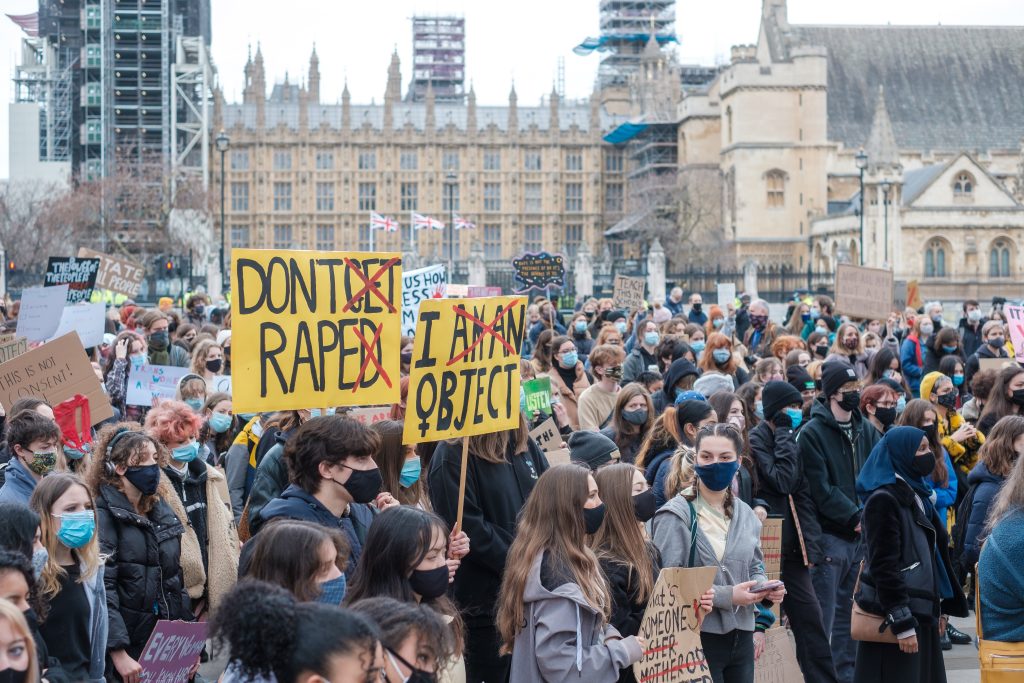Policy shapes how a problem is understood, who the primary actors are, and how it should be solved. By prioritising programs which have the greatest impact, reframing the problem, and designing interventions that target root causes, policies can actively change the culture that enables gender-based violence and reduce harm against those who are most vulnerable.
Policy faces an uphill battle in a patriarchal society – but it can still win.
Gender-based violence is pervasive globally, with an estimated one in three women worldwide experiencing either intimate partner violence or non-partner sexual violence. Common myths about gender-based violence posit that men who commit gender-based violence are uniquely deviant, with individual issues such as poor mental health or a past history of violence; however, expert opinion from the Sourcebook on Violence Against Women argues that committing this type of violence has more to do with subscriptions to traditional gender norms, such as women needing to be submissive and the idea that men are naturally aggressive. This type of violence is culturally embedded, with widespread social myths minimising the impact and justifying the occurrence of gender-based violence. While policy plays a pivotal role in ending gender-based violence, it faces an uphill battle in making a difference in a patriarchal culture.
The Importance of Gender-Based Violence Policy
While policy dictates how others are meant to respond to gender-based violence, it itself is also a response that shapes how we think about the issue. Policy creates and promotes social meaning: it shapes people’s understandings of how to address, discuss and solve social problems. As long as gender-based violence policies have existed, they have been overwhelmingly male-centred. The reality is that most policymakers have historically been white, upper-class men, and today’s policies are created in a legal framework shaped by their perspectives. This is an important caveat because the worries that men tend to have regarding gender-based violence, such as being falsely accused, are quite different from the worries of women and members of the LGBTQIA+ community, who make up the vast majority of victims.
While laws can often appear objective or even apolitical, they are, in the end, created by people and thus ingrained with personal values and biases.
For example, political scientists Gash and Harding found that public discussion on cases of sexual violence on social media are largely shaped by legal discourses that have prioritized protecting men from false accusations, policing women’s dress and behaviour, and limiting the definition of what constitutes sexual violence. While laws can often appear objective or even apolitical, they are, in the end, created by people and thus ingrained with personal values and biases.
Feminist Gender-Based Violence Policy
The European Commission and national governments must adopt a feminist approach in their policies against gender-based violence to protect those who are most vulnerable. While there is much that must be considered, here are a few ways of doing this.
Effective policies must address the root cause of the problem – a patriarchal culture – through methods of cultural change and full accountability for perpetrators of gender-based violence.
A gender-based violence policy informed by feminism should prioritise what is effective over what is convenient. Policies need to be practical and palatable in order to be broadly implemented, but there is no value in broadly implementing a policy that is ineffective. Effective policies must address the root cause of the problem – a patriarchal culture – through methods of cultural change and full accountability for perpetrators of gender-based violence. While it may be convenient to create a policy that can be widely applied, the truth is there is no one-size-fits-all policy when it comes to cultural change. Local histories, community demographics, and the social beliefs around gender-based violence are not universal, so policies must incorporate adaptability to ensure they remain relevant.
Secondly, it must portray gender-based violence as a societal issue – not a women’s issue. Policies and political discussions tend to only gender the victims and not the perpetrators. By portraying gender-based violence solely as a women’s issue, it ignores victims of other genders and obfuscates the role men play in both committing this violence and contributing to the culture that encourages it to continue. Because gender-based violence is largely rooted in societal beliefs, everyone is implicated in contributing to this culture and has a responsibility to work towards changing it. Policies explicitly incorporating men into the solution are essential for the widespread cultural change needed to end gender-based violence.
Source: Ehimetalor Akhere Unuabona; Unsplash
Finally, it needs to refocus attention on prevention. Many gender-based violence policies prioritise on changing criminal justice approaches so that perpetrators are held accountable; while valuable, following this approach alone has many shortcomings. A criminal justice approach to gender-based violence increases risks for people of colour, who are disproportionately targeted by policing globally, and is largely ineffective at deterring gender-based violence, given that an estimated 975 of 1000 rapists in the United States walk free. A prevention perspective is necessary to actually diminish the rates of gender-based violence and create a safer and more equal society. Influenced largely by social norms theory, which argues that people learn how to behave by observing the actions of others, gender-based violence prevention strategies adjust cultural perceptions of gender and undermine discourses that support a patriarchal culture. For example, although most men do not commit sexual violence, those who are predisposed to committing assault are encouraged by a broader culture that minimises the impact of rape and gives the perception of peer support. This line of reasoning has led to academics and practitioners, such as Brown and Messman-Moore, creating violence intervention programs that encourage people to speak out against sexist jokes and language, confront sexual and domestic violence when it is safe to do so, and support victims.
A Way Forward for Reducing Harm
Policy shapes how a problem is understood, who the primary actors are, and how it should be solved. By prioritising programs which have the greatest impact, reframing the problem, and designing interventions that target the root causes of gender-based violence, policies can actively change the culture that enables gender-based violence and reduce harm against those who are most vulnerable.
Cover Image: Feminist activists are demanding that governments do more to end the epidemic of gender-based violence. Source: Nadine Shaabana, Unsplash



![Feminists in Paris gave a name to invisible murders – Femicide! Féminicides: Les meurtres invisibles [EN/FR]](https://www.youngfeminist.eu/wp-content/uploads/2016/11/15167531_1783264255257596_458438252166026857_o-150x150.jpg)

![“Stop bawling” – Obstetric violence in Hungary: Ne üvöltsön már annyira” – Szülési jogok Magyarországon [EN/HU]](https://www.youngfeminist.eu/wp-content/uploads/2016/08/12440618_1754445548108320_7624536279660482713_o-150x150.jpg)
Average Rating